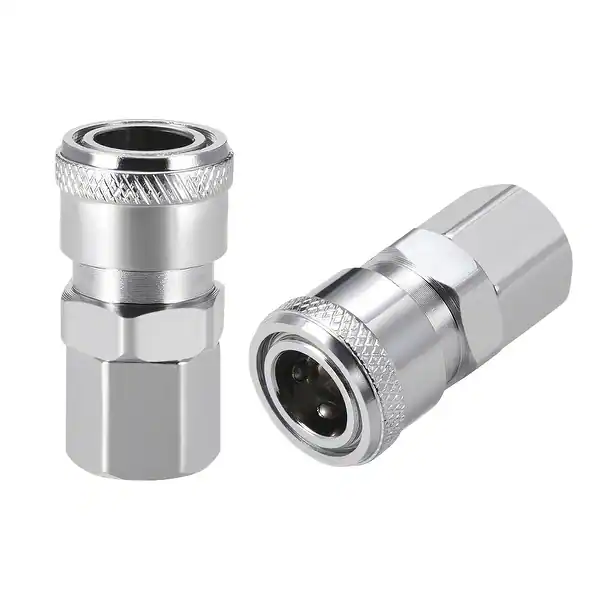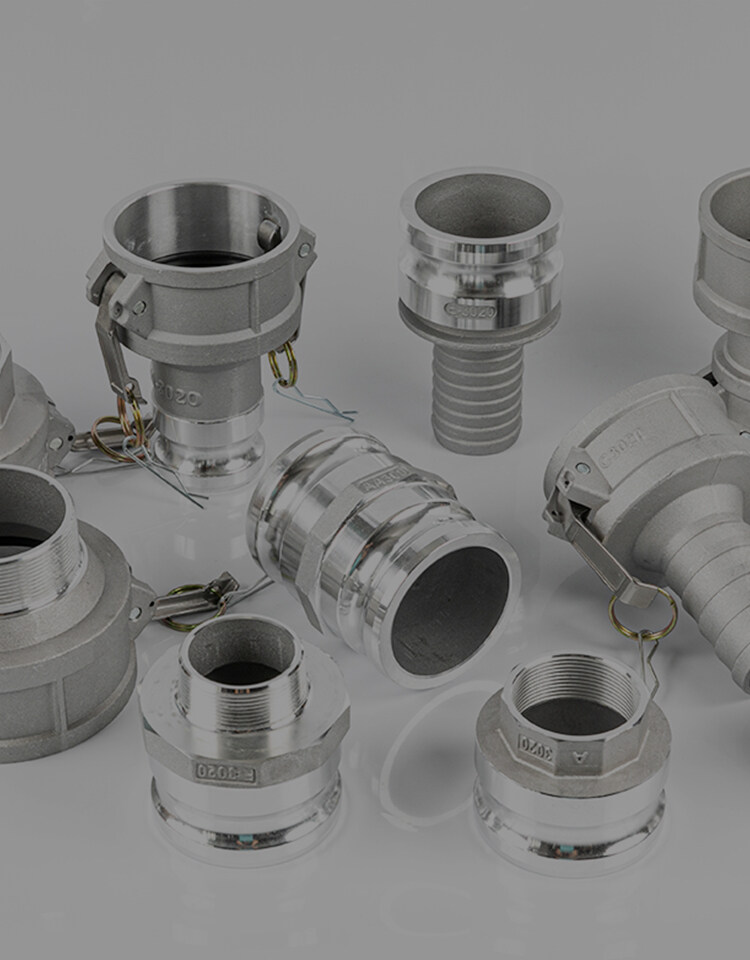Erreur de format d'e-mail
emailCannotEmpty
emailDoesExist
pwdLetterLimtTip
inconsistentPwd
pwdLetterLimtTip
inconsistentPwd

Nouvelles
Ici, vous pouvez décrire un morceau de texte que vous souhaitez exprimer

Maximizing Efficiency with High Pressure Quick Release Couplings in Industrial Applications
In the realm of industrial machinery and fluid handling systems, the high pressure quick release coupling has emerged as a cornerstone component, integral to the seamless operation of countless applications. These couplings serve as the critical link between hoses, pipes, and other segments of a system, enabling the swift and secure transfer of fluids and gases under high pressure. The ability to connect and disconnect these components quickly, without the need for tools, not only enhances efficiency but also significantly reduces downtime in maintenance and emergency situations. In this comprehensive exploration, we will delve into the nuances of high pressure quick release couplings, examining their design, functionality, and the pivotal role of associated hardware such as bolt coupling nut, coupling nut bolt, and coupling bolts and nuts in maintaining a robust connection.
Understanding High Pressure Quick Release Couplings
At its core, the quick release coupling is a device designed to facilitate the rapid joining and separation of fluid transfer lines. Engineered to withstand the demands of high-pressure environments, these couplings are essential in applications ranging from hydraulic systems to chemical processing plants. The quick-release feature is a testament to the coupling’s design, which prioritizes both security and ease of use, allowing operators to make connections without the need for specialized tools or excessive force.
The Mechanics Behind the Magic
The functionality hinges on their ability to maintain a secure connection under extreme pressure while allowing for quick disengagement when necessary. This is achieved through precision-engineered locking mechanisms, seals, and the strategic use of durable materials. Central to the coupling’s integrity are the coupling bolts and nuts, which must be meticulously designed to withstand the forces at play. The coupling bolt, in particular, is a critical element that ensures the coupling halves remain securely fastened together, preventing any accidental disconnections or leaks.
Types of High Pressure Quick Release Couplings
As we venture further into the world of high pressure quick release couplings, it becomes evident that there is a diverse array of types, each tailored to meet specific requirements and challenges. Let’s explore some of the most prevalent designs:
Threaded Couplings: Renowned for their simplicity and reliability, threaded couplings employ a straightforward screw mechanism that is tightened and secured using a coupling nut and bolt. This type is often favored in applications where a robust and enduring connection is paramount.
Ball-Lock Couplings: These couplings utilize a series of locking balls that engage with a mating groove to form a secure connection. The ball-lock mechanism is revered for its quick and effortless engagement and disengagement, making it a popular choice for applications where time is of the essence.
Flat-Face Couplings: With their distinctive flat sealing surfaces, flat-face couplings are designed to minimize fluid loss and contamination during disconnection. This makes them particularly suitable for environments where cleanliness and spillage prevention are critical.
Push-Pull Couplings: Characterized by their intuitive operation, push-pull couplings are connected with a simple push and disconnected with an equally straightforward pull. This design is ideal for applications that require frequent and rapid hose changes without compromising on security.
Selecting the Right Coupling for Your Needs
Choosing the appropriate high pressure quick release coupling for your application is a decision that should not be taken lightly. Several key factors must be considered to ensure optimal compatibility and performance:
Pressure Rating: The coupling must be capable of handling the maximum pressure exerted by your system. Underestimating the pressure rating can lead to catastrophic failures and safety hazards.
Material Compatibility: The materials used in the construction of the coupling should be selected based on their resistance to the fluids or gases being transferred. Incompatibility can result in corrosion, degradation, and ultimately, system failure.
Size and Flow Requirements: It is crucial that the coupling matches the size of the hoses or pipes it will connect. Additionally, the coupling should support the required flow rate without introducing restrictions that could lead to pressure drops or inefficiencies.
Environmental Conditions: The operating environment can have a significant impact on the performance and longevity of a coupling. Factors such as temperature extremes, exposure to chemicals, and the presence of abrasive materials or vibrations must be taken into account.
Installation Best Practices
The installation is a process that demands attention to detail and adherence to best practices. A successful installation not only ensures a secure and leak-free connection but also lays the foundation for the coupling’s long-term reliability. Here are the essential steps to follow:
Step 1: Inspect Components
Before commencing the installation, it is imperative to inspect all components for signs of damage, wear, or manufacturing defects. This includes a thorough examination of the coupling halves, as well as the coupling bolts and nuts that will be used to secure the connection.
Step 2: Align and Connect
Carefully align the coupling halves, taking care to ensure that they are properly seated and oriented. Follow the manufacturer’s instructions to connect the halves, making sure that the connection is snug and free from any misalignment or gaps.
Step 3: Tighten Securely
Using the appropriate tools, tighten the coupling nut and bolt to the manufacturer’s specified torque settings. This step is crucial in preventing leaks and ensuring that the coupling can withstand the pressures it will encounter during operation.
Step 4: Test for Leaks
Once the coupling is installed, conduct a pressure test to verify the integrity of the connection. Any leaks should be addressed immediately by re-examining the alignment and tightening of the coupling components.
Ensuring a Leak-Free Connection
The key to a leak-free connection lies in the meticulous alignment and secure tightening of the coupling nuts and bolts. These elements must be carefully selected and installed to match the specifications of the coupling and the demands of the application. It is often recommended to use a calibrated torque wrench to achieve the precise torque required for a secure fit.
Maintenance for Longevity
The longevity and reliability are directly tied to regular maintenance and care. Establishing a routine inspection and maintenance schedule is essential for identifying potential issues before they escalate into major problems. Here are some maintenance tips to keep in mind:
Regular Inspection: Periodically check the coupling for signs of wear, corrosion, or damage. Pay special attention to the condition of the coupling bolts and nuts, as these are critical to the coupling’s structural integrity.
Clean and Lubricate: Keep the coupling clean from debris and contaminants. Lubricate moving parts as recommended by the manufacturer to ensure smooth operation and to prevent premature wear.
Replace Worn Parts: If any components, such as the coupling bolt or nuts, show signs of wear or damage, replace them promptly. Using worn or damaged parts can compromise the safety and efficiency of the entire system.
Follow Manufacturer Guidelines: Always adhere to the manufacturer’s guidelines for maintenance and part replacement. This will help ensure that the coupling continues to perform as intended and extends its service life.
Troubleshooting Common Issues
Even with diligent maintenance, issues can arise with high pressure quick release couplings. Being able to quickly identify and troubleshoot common problems is key to minimizing downtime and maintaining system performance. Some typical issues include leaks, difficulty in engaging or disengaging the coupling, and signs of wear on the coupling components. In many cases, these issues can be resolved by inspecting and tightening the coupling nuts and bolts, replacing worn seals, or cleaning and lubricating the coupling as necessary.
Advancements in Coupling Technology
The field of high pressure quick release coupling technology is constantly evolving, with manufacturers striving to improve performance, safety, and ease of use. Recent advancements include the development of new materials that offer greater resistance to extreme temperatures and corrosive substances, as well as innovative designs that enhance the coupling’s locking mechanisms and sealing capabilities. Staying abreast of these developments can provide significant benefits to industrial operations, leading to more efficient, reliable, and safe fluid handling systems.
Conclusion
High pressure quick release couplings are indispensable in the efficient and safe operation of industrial systems. By understanding the various types available, selecting the right coupling for your application, and committing to proper installation and maintenance practices, you can ensure the longevity and reliability of your fluid handling systems. It is also crucial to pay close attention to the associated hardware, such as coupling nuts and bolts, as they play a significant role in maintaining a secure and leak-free connection.

